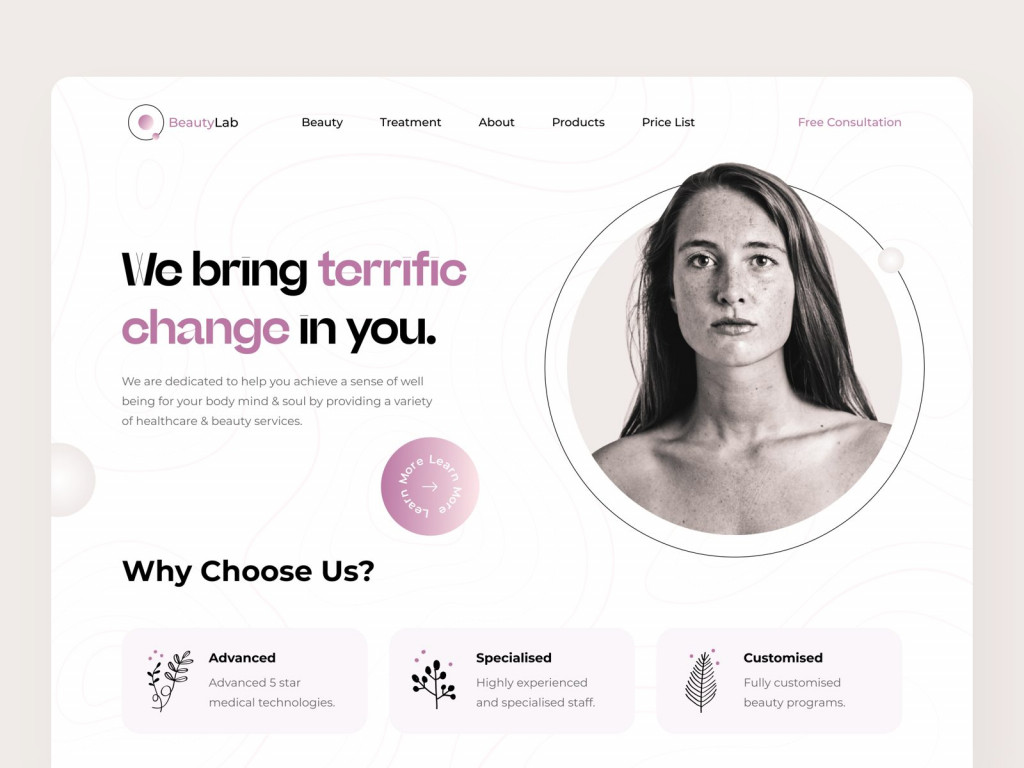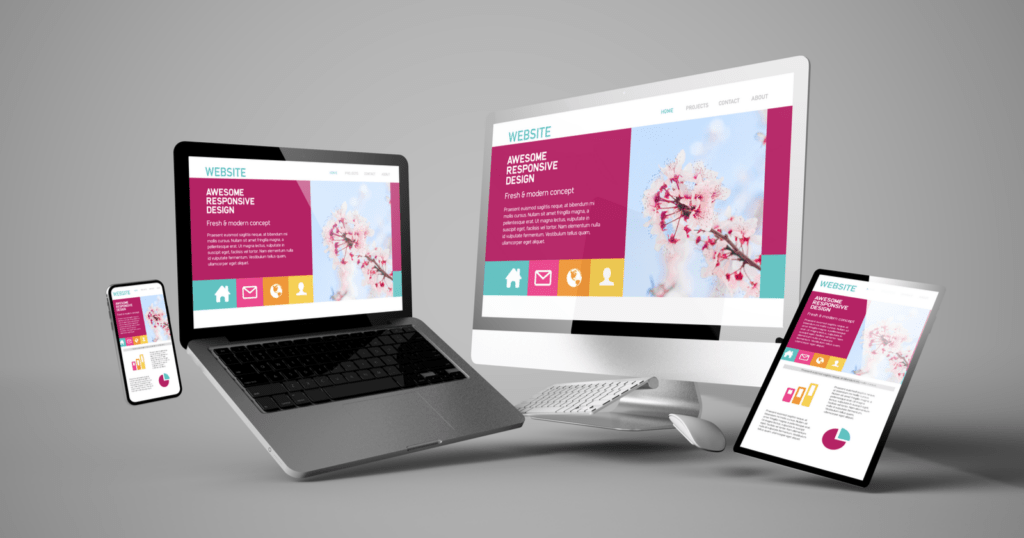How to Improve Your Website Design for Better Conversion Rates
How to Improve Your Website Design for Better Conversion Rates
Blog Article
Modern Website Style That Captures Attention and Transforms
In a significantly digital landscape, contemporary website layout has emerged as an essential aspect in recording user attention and driving conversions. As we discover these important elements, it ends up being clear that comprehending their interplay can dramatically influence an internet site's efficiency and individual fulfillment.
Relevance of Visual Power Structure
Visual hierarchy is a critical element in site design, as it overviews individuals' attention and enhances their total experience. By tactically organizing content, developers can direct individuals to one of the most crucial details initially, consequently enhancing interaction and enhancing use. Effective visual power structure utilizes various strategies, including size, shade, spacing, and comparison. Larger elements naturally draw the eye, while contrasting shades can emphasize crucial messages, making them stand out amongst even more suppressed parts.
Integrating a rational circulation in web content arrangement is vital; as an example, putting the most crucial information at the top of a page promotes instant recognition. Regular use of typography, such as varying font sizes and styles, helps develop a clear material framework. This company not just help in navigation however also constructs trust, as users feel much more comfy when they can easily locate what they are searching for.
Eventually, a well-executed aesthetic hierarchy not only improves aesthetic allure however additionally dramatically affects user behavior. By focusing on necessary elements and making sure a seamless experience, designers can efficiently convert visitors right into customers, strengthening the relevance of this foundational style concept in modern-day internet site advancement.
Responsive Layout for All Devices
Producing a seamless experience throughout different tools is vital in today's digital landscape, where users accessibility web sites from desktop computers, mobile phones, and tablet computers alike. Receptive style is a critical strategy that makes certain websites adjust fluidly to various display sizes, alignments, and resolutions. By employing flexible grids, pictures, and CSS media queries, designers can produce designs that preserve aesthetic stability and capability, no matter the tool being made use of.
The value of responsive style prolongs beyond aesthetics; it directly affects customer involvement and conversion prices. An internet site that functions well on all devices urges longer brows through and minimizes bounce prices, as customers are much more most likely to engage with material that is very easy to browse. Search engines, specifically Google, focus on mobile-friendly sites in their positions, making receptive layout a crucial element of search engine optimization (SEO)
Integrating receptive design not just enhances customer experience yet likewise streamlines the advancement process. By producing a single website that functions across gadgets, businesses can save time and resources compared to developing different mobile and desktop variations. Eventually, responsive design is an essential approach for modern-day site style, guaranteeing availability and contentment for all customers, no matter of their tool.
Involving Interactive Components
While a receptive style lays the foundation for a useful web site, integrating appealing interactive aspects is important for catching user attention and fostering much deeper connections. Website Design. Interactive elements, such as computer animations, tests, and clickable infographics, create a more dynamic user experience, encouraging site visitors to invest even more time on the website
Including interactive features can additionally guide customers with complex information, making it easier to absorb web content. Interactive sliders can illustrate product variations, while embedded videos can provide demonstrations or reviews that reverberate useful site more than static images or message. Gamification techniques, like incentives for engaging or completing jobs with web content, can improve user inspiration and retention.
Reliable use of interactive aspects not just improves the individual experience yet can likewise bring about higher conversion rates. By making interactions satisfying and interesting, organizations can cultivate a feeling of commitment and count on with their target market. Nonetheless, it is necessary to stabilize interactivity with efficiency; extremely complicated attributes may impede website speed, adversely affecting individual satisfaction. Eventually, incorporating well-designed interactive components can dramatically boost a site's effectiveness, driving engagement and conversions in today's competitive digital landscape.
Structured Navigating Practices
Effective navigation is a cornerstone of any kind of effective site, as it straight influences individual experience and web content access. Structured navigation methods guarantee that individuals can easily find information, improving their interaction with the site. A well-structured navigation food selection need to be instinctive and simple, generally including a restricted number of key classifications to avoid frustrating site visitors.
To achieve structured navigating, developers must focus on an ordered structure that practically arranges web content. Implementing breadcrumb routes can supply users with context regarding their present area within the website, permitting smooth backtracking. Additionally, utilizing drop-down food selections can successfully conserve room while still supplying access to subcategories.
Receptive style is essential, as navigating must be practical across all gadgets (Website Design). Mobile users, particularly, take advantage of touch-friendly food selections and collapsible areas that maintain functionality without jeopardizing looks

Efficient Call-to-Action Techniques
A well-crafted you could try here call-to-action (CTA) is necessary for directing customers toward wanted results on a website, as it motivates them to engage with material or buy. To optimize their efficiency, CTAs should be clear, engaging, and strategically put throughout the website.
First, use action-oriented language that interacts urgency or value, such as "Begin," "Join Now," or "Case Your Discount." This language not just encourages users yet also establishes clear expectations regarding the following steps.
2nd, think about layout elements; CTAs should stand out visually with contrasting shades, enough whitespace, and noticeable positioning. A switch that is very easy to see and click rises the possibility of customer interaction.
In addition, personalizing CTAs based upon user behavior or demographics can substantially boost involvement. Customized messages resonate a lot more with customers, driving higher conversion rates.

Final Thought
These components jointly improve individual experience, making sure that site visitors stay engaged and inspired to explore web content even more. By prioritizing these design concepts, companies can dramatically enhance individual retention and conversion rates, eventually leading blog here to greater success in the electronic landscape.
In a significantly electronic landscape, modern website layout has actually arised as an essential element in capturing customer interest and driving conversions.Visual pecking order is a critical aspect in website layout, as it guides individuals' focus and improves their overall experience.The relevance of responsive layout expands beyond aesthetic appeals; it directly influences user interaction and conversion rates.Integrating responsive style not just improves user experience but likewise streamlines the growth process. Ultimately, receptive design is a basic strategy for contemporary website design, ensuring availability and complete satisfaction for all customers, regardless of their tool.
Report this page